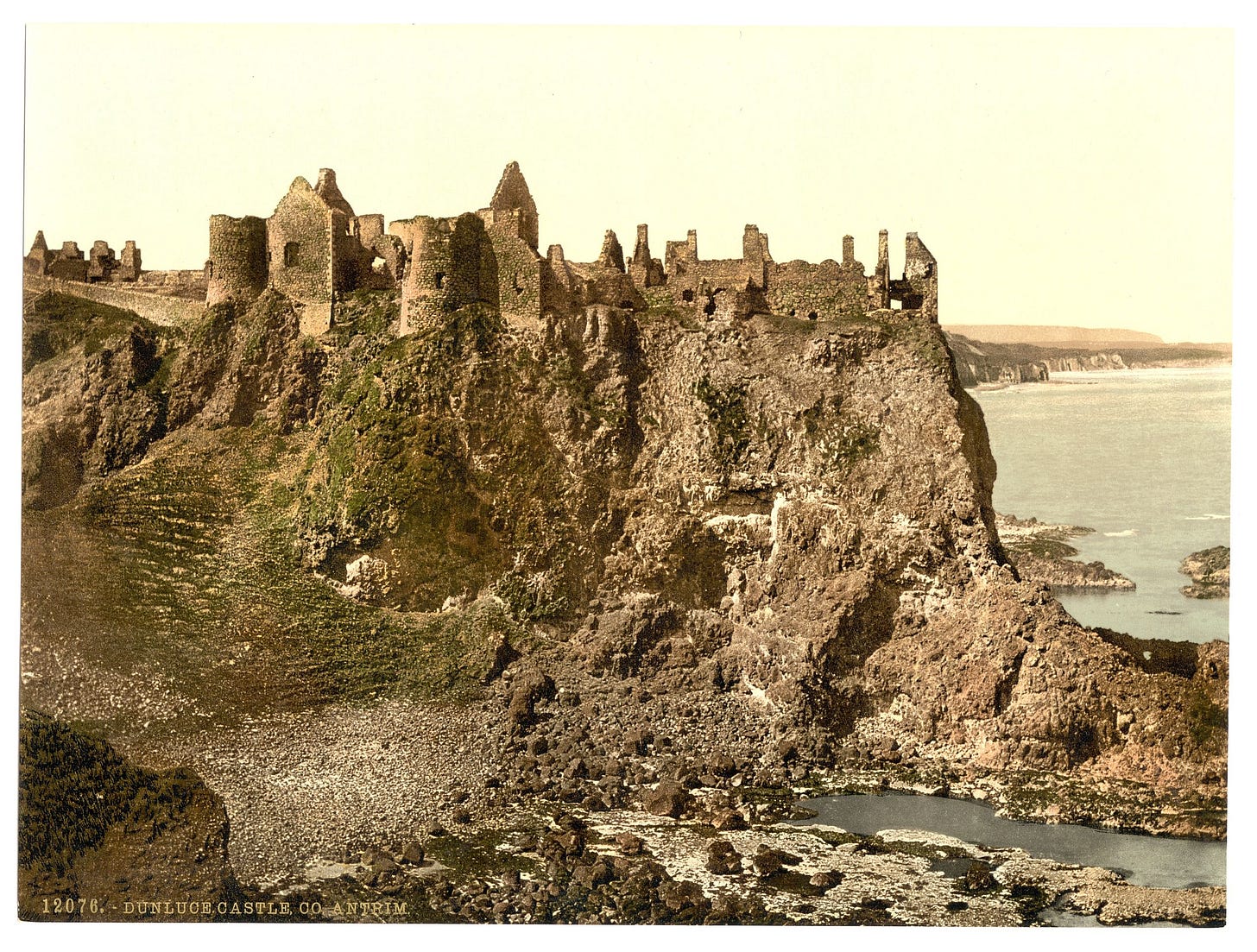Inspiration of “Peter’s First Battle”
What makes you nostalgic for childhood? Is there a place you can picture in your mind that evokes the contradiction of simultaneous excitement and safety emblematic in being a kid?
Obviously, not everyone has an idyllic childhood, but for most of us, there are memories that seem tangible, that feel as if we could walk right back into them and maybe into a simpler time. For C.S. Lewis, those were the days of vacations by the Irish coast prior to his mother’s death in 1908.
Lewis was born in 1898 in Belfast, Northern Ireland. The Irish lands echo into Narnia, including in the world’s capital castle Cair Paravel. The Narnian castle most likely takes its inspiration from Dunluce Castle, originally built in the 13th century on an outcropping of Irish cliffs over the Northern Atlantic Ocean facing Scotland. Lewis first visited the ruins of the castle in 1906. At the time, it was nothing more than a place to run around, “but in the years to come it would become a place shrouded in the stuff of faerie,” according to Harry Lee Poe’s Becoming C.S. Lewis.
In “Peter’s First Battle,” Lewis doesn’t give us much of a description of the castle, only that Peter thought “it looked like a great star resting on the seashore.” Later in The Lion, the Witch and the Wardrobe, Lewis writes: “The castle of Cair Paravel on its little hill toward up above them; before them were the sands, with rocks and little pools of salt water, and seaweed, and the smell of the sea and long miles of bluish-green waves breaking for ever and ever on the beach.” In a letter to his friend Arthur Greeves about his time at Castlerock, the area around Dunluce Castle, Lewis said, “Waves make one kind of music on rocks and another on sand, and I don’t know which of the two I would rather have.”
When Lewis is writing about the fictional castle, he is remembering his idealized youth. After he describes Cair Paravel, he even writes, “And oh, the cry of the seagulls! Have you ever heard it? Can you remember?”
The name “Cair Paravel” has been the source of discussion. In his letters, Lewis says the word kaer is Celtic for “city” or, as it is often translated, “castle.” For its part, paravel could be derived from “paravail,” Old French for “below” and with roots in Latin meaning “to the valley.” In Old English, it came to mean “at the bottom” or the lowest. This could be Lewis referring to the home of the human rulers of Narnia as the lower castle, meaning they served as regents below the true ruler of Narnia. Aslan would rule from the higher castle with the Emperor Beyond the Sea.
Keep reading with a 7-day free trial
Subscribe to The Wardrobe Door to keep reading this post and get 7 days of free access to the full post archives.






